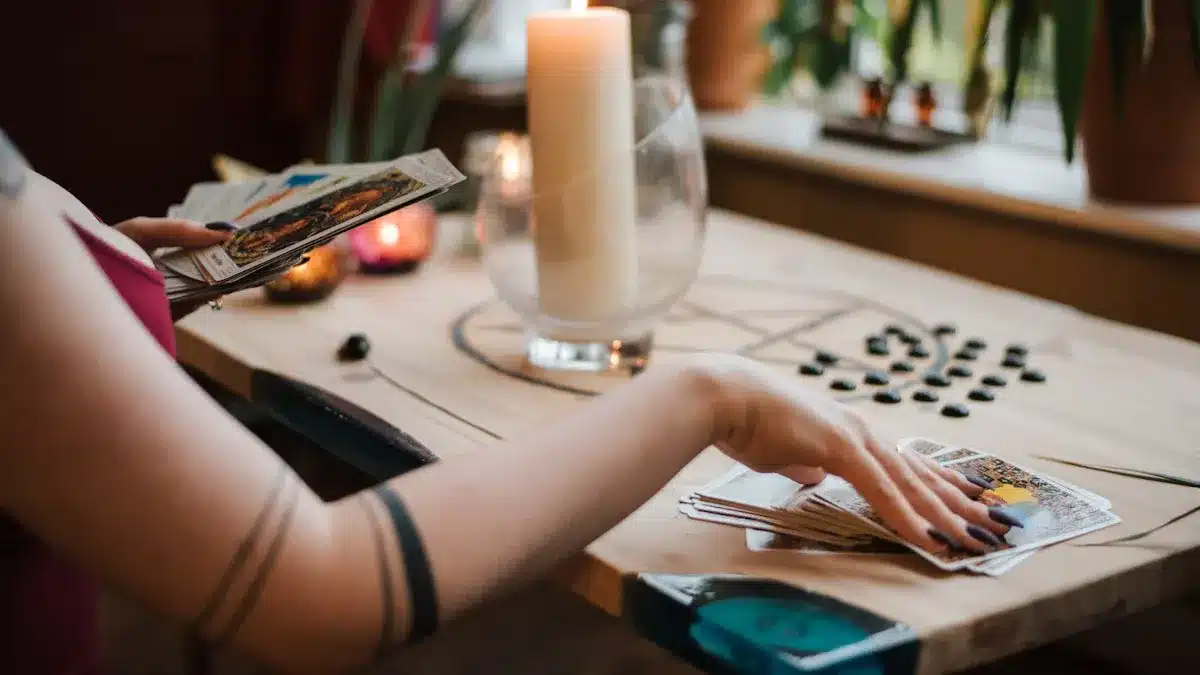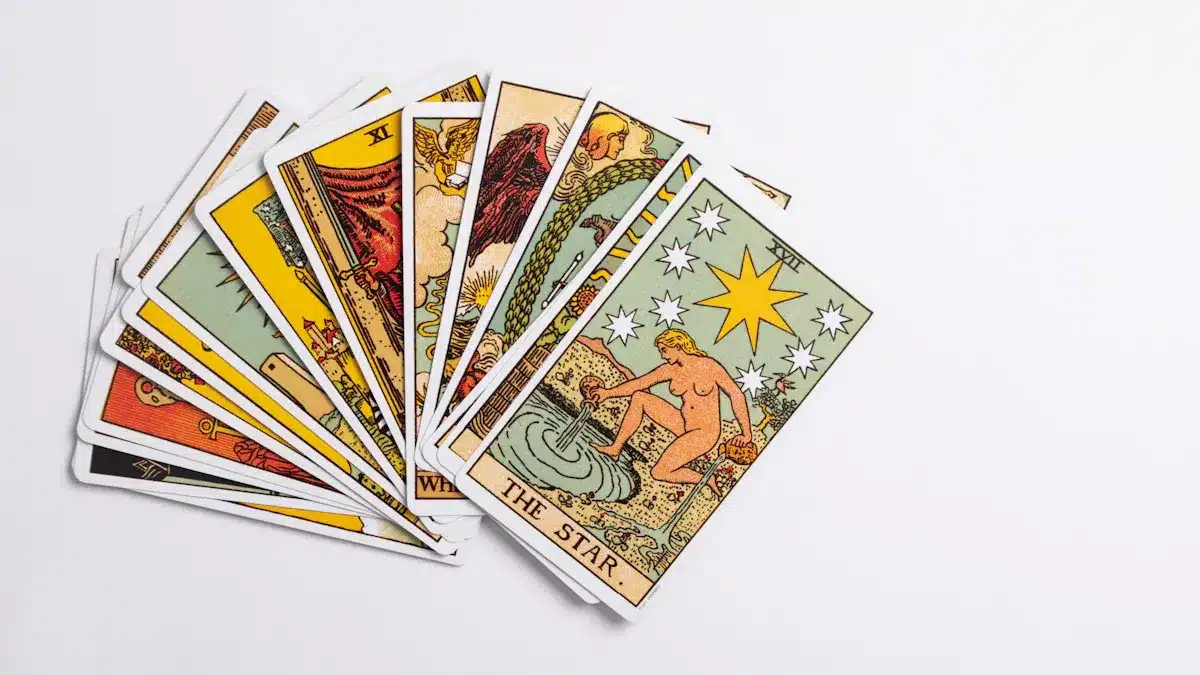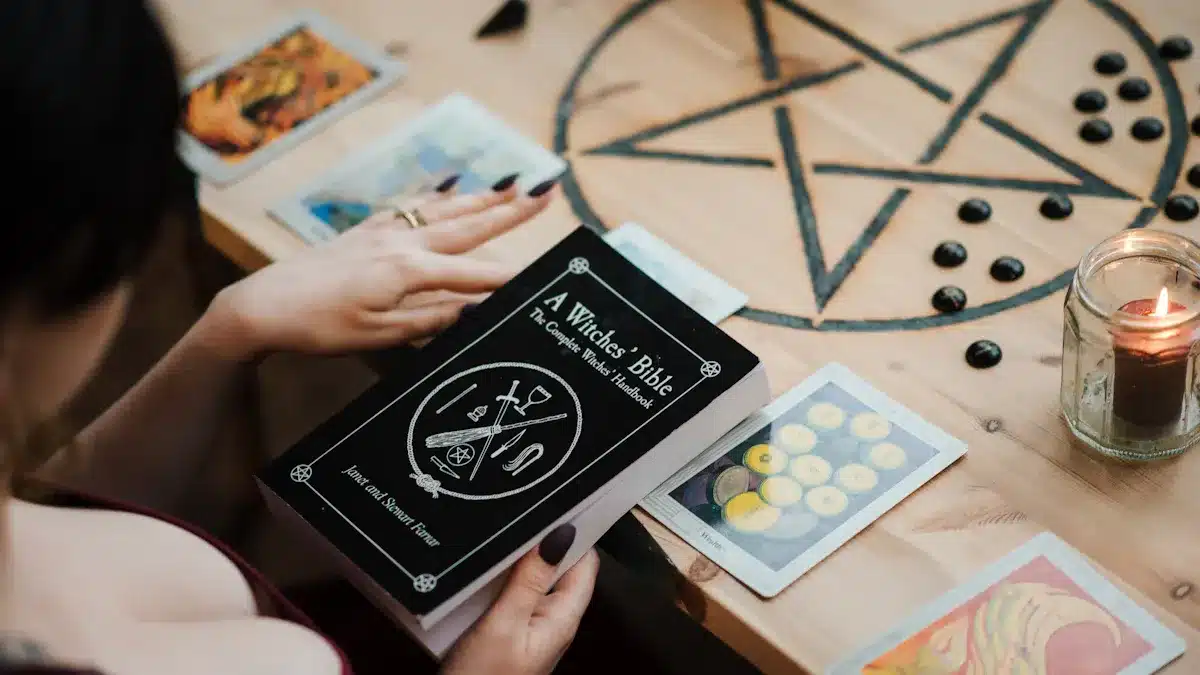
A yes-or-no tarot reading is a simple way to get quick answers to your questions, and you can refer to a yes or no tarot list for guidance. It’s perfect for those moments when you need clarity without diving into complex spreads. You ask a question, pull a card, and interpret it as yes, no, or maybe. Sounds easy, right?
So, why use tarot for yes or no questions? It’s a great tool for decision-making. Whether you’re unsure about a choice or seeking guidance, a yes-or-no tarot reading can help you focus. The cards offer insights that align with your intuition, and a yes or no tarot list can help you understand the meanings better.
Speaking of intuition, it plays a huge role in yes/no readings. Here’s why:
-
Setting clear intentions before a tarot reading helps you get better results.
-
Your intuition guides you during the interpretation of the cards.
-
The cards reflect your subconscious, shaped by your experiences.
Trust your intuition when interpreting the messages. The tarot can provide guidance and clarity, but ultimately it’s up to you to decide what actions to take.
When you connect your intention to the question, the tarot becomes a mirror for your thoughts. This connection makes your yes-or-no reading more meaningful, especially when you refer to a yes or no tarot list for additional insights.
Key Takeaways
-
Set clear intentions before your tarot reading. This helps you get more meaningful insights and connect better with the cards.
-
Ask specific yes or no questions. Clear questions lead to clearer answers, making your readings more effective.
-
Trust your intuition during readings. Your first impression of a card often holds the key to understanding its message.
Preparing for a Yes or No Tarot Reading

Setting Intentions for Yes or No Questions
Before diving into a yes-or-no spread, take a moment to set your intentions. This step is crucial because clear intentions lead to meaningful insights. Think about what you want to know and why. Are you ready to hear the answer, no matter what it is? If not, it might be better to wait until you feel prepared.
When framing your question, keep it simple and positive. For example, instead of asking, “Will I fail this project?” try, “Will I succeed in completing this project?” Positive questions encourage constructive guidance. Avoid double questions like, “Will I get the job, and will I like it?” Break them into two separate inquiries for clarity.
Remember, the cards reflect your energy and focus. By setting clear intentions, you create a stronger connection with the tarot, making your reading more accurate and insightful.
Choosing a Deck for Yes/No Readings
The deck you choose can influence your reading. While any tarot deck works, some people prefer decks with clear imagery or symbolism that resonates with them. If you’re new to tarot, consider starting with a deck that feels intuitive and easy to interpret.
To make your yes-or-no spread more effective, ensure your deck is balanced. This means having both upright and reversed cards. Some readers also create a personal list of yes and no cards to streamline their process. This list can help you quickly identify answers during your reading.
Shuffling Techniques for Yes-or-No Tarot Reading
Shuffling is more than just mixing the cards—it’s a way to connect with your deck. There’s no right or wrong way to shuffle, so choose a method that feels natural to you. You can try the overhand shuffle, where you pass cards from one hand to the other, or the riffle shuffle, which creates a satisfying cascade of cards.
As you shuffle, focus on your question. Let your energy flow into the deck. Some readers like to cut the deck into three piles and then reassemble it before drawing a card. Others prefer to shuffle until a card “jumps” out. Experiment with different techniques to find what works best for you.
Tip: Avoid over-shuffling or second-guessing your draw. Trust the process and the message the cards reveal.
Performing a Yes or No Tarot Reading

Asking Clear Yes or No Questions
The first step is to ask a clear question. A good question helps you get better answers. Keep it simple and focused. For example, instead of asking, “Will I find love and get married this year?” split it into two questions. This way, you avoid confusion and get clear answers.
Don’t ask vague or broad questions. Instead of saying, “Will my life improve?” try asking, “Will I get a promotion at work this year?” A specific question makes it easier for the cards to give a direct answer.
Using a Yes or No Tarot List to Pick Cards
A yes or no tarot list can help during your reading. This list gives meanings to each card, making it easier to understand. For example, upright cards might mean “yes,” while reversed cards could mean “no.” Some cards might mean “maybe,” depending on their symbols.
This isn’t like a magic 8-ball, but it helps you see things differently. The cards give answers like ‘yes,’ ‘no,’ or ‘maybe.’ Often, the answer feels clear after thinking about it, even if it’s hard to admit at first.
Using a list like this makes your reading easier and builds your confidence. It’s especially helpful if you’re new to tarot and still learning the card meanings.
Understanding Cards as Yes, No, or Maybe
After picking a card, figure out what it means. Check if it’s upright or reversed. Upright cards usually mean “yes,” while reversed ones often mean “no.” Some cards, like The Moon or The Hanged Man, might mean “maybe.” These need more thought based on your question.
Look at the card’s pictures and symbols. For example, The Sun shows happiness and success, so it’s a strong “yes.” The Tower shows problems or big changes, so it’s likely a “no.” Trust your feelings when deciding what the card means.
Dealing with Neutral or Unclear Cards
Sometimes, a card won’t give a clear answer. Cards like The Lovers or Temperance might feel neutral or unclear. When this happens, think about the card’s energy and how it fits your question. Does it show balance, doubt, or needing more details?
If the card feels unclear, don’t worry. Use it to think more about your situation. Ask yourself if the card is telling you to rethink your question or look at other choices. Remember, tarot isn’t just about yes or no—it’s also a way to learn about yourself and find guidance.
Tips for Accurate Yes/No Readings
Trusting Your Intuition During Yes/No Readings
Your intuition is your best guide during yes/no readings. When you draw a card, pay attention to your initial reaction. What does the card make you feel? Often, your first impression holds the answer. Trust it.
Sometimes, overthinking can cloud your judgment. Instead of analyzing every detail, let the card’s imagery and energy speak to you. For example, if you pull The Star, its hopeful and positive vibe might immediately feel like a “yes.” Trust that feeling. The more you practice, the stronger your intuitive connection with the cards will become.
Tip: Before starting, take a deep breath and clear your mind. A calm state helps you tune into your intuition more effectively.
Avoiding Common Mistakes in Yes or No Questions
Asking the right question is key to getting accurate answers. Avoid vague or overly complex questions. Instead, focus on clear and simple questions. For example, instead of asking, “Will I be happy in the future?” try, “Will I enjoy my new job?” Specificity leads to better insights.
Here are some common mistakes to avoid:
-
Asking multiple questions at once. Break them into separate, simple questions.
-
Using complicated spreads. Stick to one-card pulls for straightforward answers.
-
Ignoring your intuition. Trust your gut when interpreting the cards.
By steering clear of these pitfalls, you’ll find it easier to get meaningful guidance from your readings.
Practicing with a Yes or No Tarot List to Build Confidence
Practice makes perfect, especially with yes/no readings. A yes or no tarot list can be a helpful tool as you learn. This list assigns clear meanings to each card, making it easier to interpret them as “yes,” “no,” or “maybe.” For example, The Sun often means “yes,” while The Tower leans toward “no.”
Start by practicing with simple questions. Ask things like, “Will it rain tomorrow?” or “Should I call my friend today?” These low-stakes questions help you build confidence in your interpretations. Over time, you’ll rely less on the list and more on your intuition.
Remember: Tarot is a tool for guidance, not a crystal ball. Use it to explore possibilities and make informed decisions.
Yes-or-no tarot readings give quick answers to your questions. They are simple and helpful for making decisions. Here’s how easy they are to use:
|
Card Type |
Meaning |
Example Question |
Answer |
|---|---|---|---|
|
Yes |
The Fool, The Magician, The Empress, The Sun |
Is this company right for me? |
Yes |
|
No |
The Hermit, Death, The Tower, The Moon |
Is this company right for me? |
No |
|
Maybe |
The High Priestess, The Chariot, Justice |
Is this company right for me? |
Maybe |
Practicing often helps you trust yourself and connect with the cards. One person said tarot gave them confidence to move forward. Another enjoyed learning more about themselves through tarot. These examples show how tarot can guide you and help you make better choices.
Remember, tarot doesn’t predict the future. It helps you think about your options and make clear decisions.
FAQ
What if I don’t get a clear yes or no answer?
Sometimes, the cards suggest reflection instead of a direct answer. Look deeper into the card’s imagery and consider rephrasing your question for clarity.
Can I use oracle cards for yes or no readings?
Yes! Oracle cards work well for yes/no readings. Just assign meanings (yes, no, maybe) to the cards beforehand to keep your interpretations consistent.
How often should I do yes or no readings?
You can do them as often as you like, but avoid over-relying on tarot for every decision. Trust your intuition and use readings for meaningful questions.
